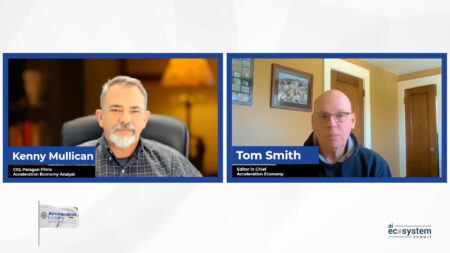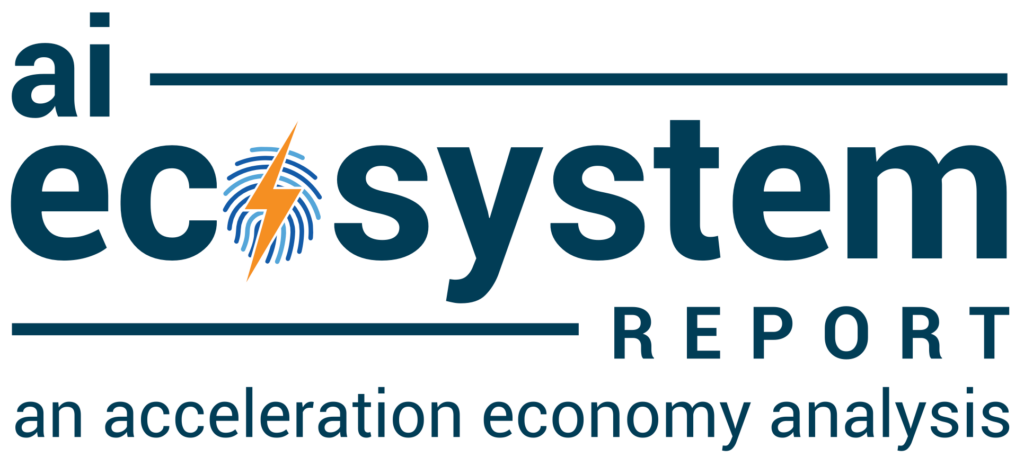
SAP Signavio’s Process Transformation Suite, inclusive of its process mining technology, is adding significant AI and generative AI functionality — supported by a massive investment in new development resources — while it records major customer wins including large tier one enterprises reporting tens of millions of savings through business and system transformations.
The developments add to the company’s momentum: SAP Signavio has more than 2,500 customers and that roster increasingly includes large enterprises that are a staple of parent SAP’s larger enterprise-software business. As it does so, SAP emphasizes its differentiated position built on an end-to-end suite that includes process mining, process analysis, enterprise observability, and more.
“We are investing a lot in innovation but it’s always innovation focused on business outcomes and applicability in a concrete, real-life enterprise context on any scale from small businesses up to the Tier One largest enterprises in the world,” says Silvio Arcangeli, senior director, product management at SAP Signavio, which shared the latest product and customer developments, as well as their AI plans, as part of the Acceleration Economy course, Process Mining in the GenAI Era.
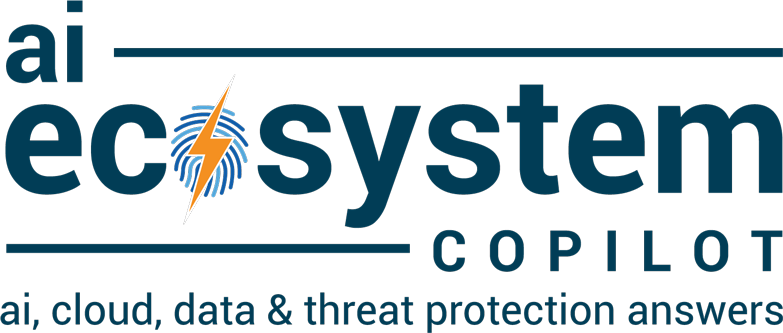
Ask AI Ecosystem Copilot about this analysis
It’s not an overstatement to say the company’s investing a lot in this technology: it has increased the number of technical personnel developing the product line by 6x since acquiring Signavio three years ago this month.
SAP Signavio Differentiators
Before explaining the company’s AI and GenAI functionality, we’ll review several core product features that SAP Signavio positions as differentiators. These include the end-to-end transformation suite applications, and technical architecture, that incorporate numerous functions into a single platform:
- Process mining
- Prebuilt process analytics
- Process and journey modeling
- Transformation management
- Integration with Enterprise Architecture
- Journey to Process Analytics
- Process automation
(A full set of product features is included in the diagram below; it depicts an example of how an enterprise might adopt a different mix of capabilities on different processes).
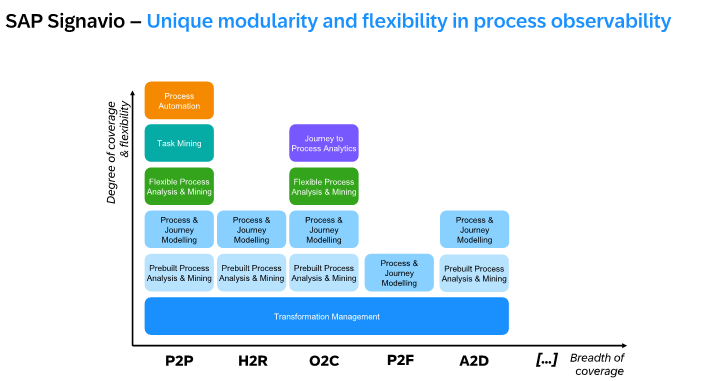
Arcangeli noted in our discussion that it’s not enough for customers to have core process mining functionality. To effect transformation, they also need analytics, content around best practices, and observability to understand which inputs will yield a specific, desired output.

Perhaps most intriguing in this suite approach is the modularity with which customers can apply individual functions required for their specific use cases, aligning the degree of tech investment to the strategic importance of a given use case and the potential to drive financial impact through optimization.
“They might decide to spend a bit more on procure-to-pay to apply not only process mining but also task mining and process automation to improve the automation overall and save on cost,” Arcangeli says. “A customer could decide, for example, to approach a smaller process with just the prebuilt process mining that we provide — the prebuilt analytics and process modeling. This kind of modularity allows our customers to adjust the degree of investment they want to make based on the expected outcome.”
The SAP Signavio suite gives customers an end-to-end perspective, from gaining process visibility up to and including process change and tracking the impact of that change.
Other key product features that are highlighted as part of our discussions and a detailed product demo:
- A “Company on a Page” view reflecting consolidated KPIs across processes and functions in a single screen
- Journey modeling that shows the end-to-end experience of individual stakeholders by discipline — employee, partner, customer
- The Ingestion API and Data Pipeline, which make connections to a diverse set of SAP and non-SAP systems that make up a company’s software ecosystem
- A Value Accelerator Library consisting of pre-built accelerators and dashboards — think metrics and dashboards — that can be deployed into a customer’s workspace
Southern California Edison is a prime example of the benefits of SAP Signavio’s technology. The utility first embarked on a transformation of its ERP system from on-premises to the cloud — that’s a prime process mining use case since that uplift can be highly challenging and time-consuming. Working with Signavio, the company identified an opportunity to effect a broader business transformation; it mapped a whopping 281 business processes based on inputs from 40 business stakeholders, then applied process mining and identified more than 20 improvement initiatives.
The end result was an overall amount of savings that had a very significant financial impact; this is exactly what has driven explosive growth in the process mining category.
AI Builds on Strength
In the course of our strategy discussion, SAP Signavio officials detailed upcoming AI and GenAI capabilities that will build on its transformation suite and could help more customers drive results like those reported by Southern California Edison.
One of the key GenAI technologies in development is referred to as a Large Process Model. This builds upon Signavio’s more than 20 years of process modeling experience and SAP’s more than 50 years of business process knowledge and data to compile best practices knowledge.
Think of the Large Process Model as a tailored vertical layer that sits atop general-purpose large language models (LLMs) adding process-specific knowledge. The company is testing the ability to tap this model to translate text (such as that contained in unstructured documents) into Business Process Modeling Notation (BPMN) diagrams — providing all the process knowledge in a central repository where stakeholders can collaborate to update a process model, apply governance, and more.
The Large Process Model will also enable process conformance checking functionality so users can gain a view into the conformance of a given process to the optimal way that process is managed and isolate activities that are non-conforming, Arcangeli says, even without requiring users to define the expected process model upfront.
To make this possible, AI breaks activities that are part of a given process into “process atoms” to identify rules (for example: a sales order must be created) for the steps that must happen for a process to function correctly. The AI engine will divide all the rules and check for violations to determine conformance levels with the individual atoms, explained JP Ascenci, Solution Advisor at SAP Signavio, in demonstrating the technology.
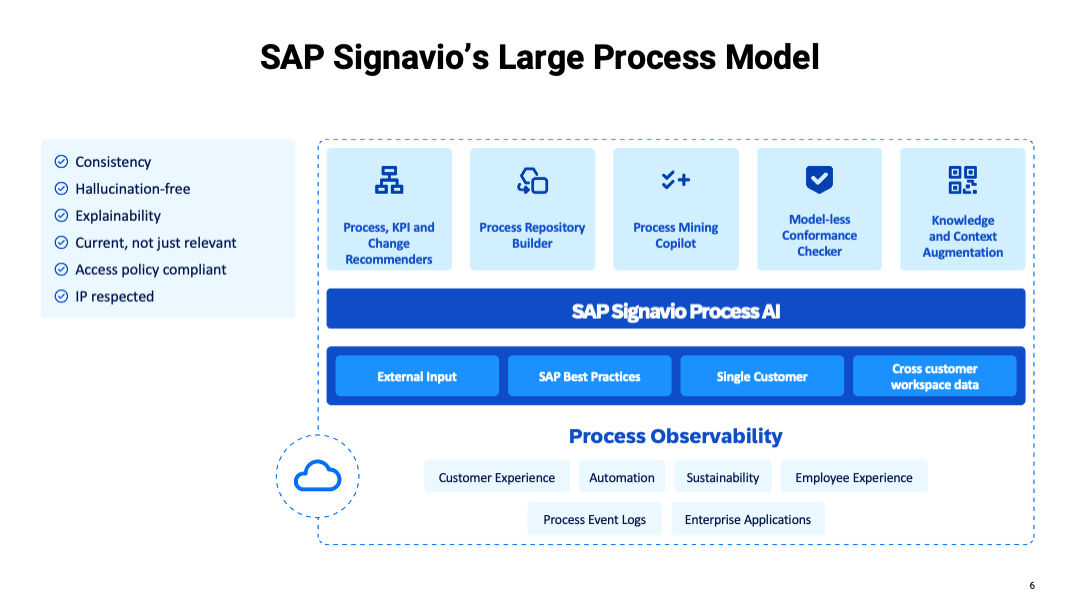
The company will apply Copilot technology that allows a wide variety of users, including those without in-depth technical knowledge of using its tools, to apply natural language to conduct root cause analysis or to recommend, simulate, test, and validate process changes before making them live. The copilot functionality would let a user ask, for example, “Why did customer satisfaction drop in December?” The AI assistant can show why it occurred and drill into specific metrics to identify areas for improvement, Ascenci said.
GenAI in SAP Signavio software will also enable a system-driven review of customer-submitted comments, in the form of unstructured data, to determine if customer sentiment is positive, negative, or neutral. “That’s going to help us to actually reinforce what we need to fix and when,” Ascenci says.
All of the aforementioned AI-driven features are currently in prototype/preview mode, Arcangeli says, and the company expects to release “a good chunk” of them into beta by year-end.
Closing Thoughts
SAP has a unique position among process mining software providers: it has arguably the largest footprint in the enterprise software market through its ERP system, and that installed base alone represents massive opportunity to serve its ERP customers. Yet the company is pushing ahead aggressively with investments and new functionality that makes its process mining and process transformation suite offerings a compelling option for customers who aren’t in the SAP fold already.





